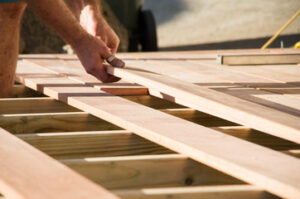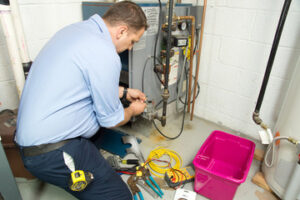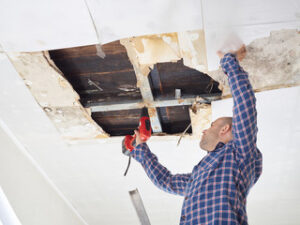Deck construction requires specific skills and knowledge to prevent costly mistakes that compromise structural integrity. An expert builder also brings project management skills that ensure efficient workflow and clear timelines for completion.

When interviewing potential contractors, ask to see their portfolios of past projects. Look for consistency in style and craftsmanship as well as their ability to accommodate your aesthetic preferences. Contact Charleston Deck Crafters for professional help.
When selecting a deck contractor, it’s important to find one with the right expertise to ensure your project is done correctly. Unskilled builders may take shortcuts or utilize inferior materials, which can lead to structural concerns and safety risks. A skilled builder can prevent these issues from arising by conducting thorough planning and ensuring compliance with local building codes.
When evaluating potential contractors, ask for client references and a portfolio of past work. Look for projects that are similar in scope and style to yours to gauge their craftsmanship and design expertise. Also, pay attention to the contractor’s communication during the quoting process. Prompt responses and clear explanations indicate professionalism and a commitment to customer service.
An experienced deck contractor will be able to identify and address problems that could arise during construction, saving you time and money. In addition, they can advise you on the best materials for your unique needs and budget. Additionally, they can help you navigate the often confusing world of homeowner associations (HOAs) and permit requirements.
Professional builders are well-versed in the latest design trends and technologies, ensuring your new deck will be both stylish and functional. They can also recommend creative solutions to address challenges that may arise during the construction process, preventing costly mistakes and minimizing project delays.
Transparency
Choosing a deck contractor with a solid reputation is essential to getting the results you expect from your project. Look for contractors who provide clear quotes, provide references, and take the time to listen to your feedback and ideas. This will help you identify potential concerns early on and avoid costly mistakes down the road.
Professional builders also have an in-depth understanding of local building codes and permits, ensuring compliance and avoiding costly fines. They may also be able to suggest creative design solutions for your deck. This is especially important if your deck is elevated or has unique features that require special considerations for safety and longevity.
A good contractor will have a portfolio of completed projects to showcase their work. Review these photos, paying close attention to craftsmanship and design creativity. Also, request a list of references from past clients and follow up with them to learn more about their experiences. A hesitance to provide these details is a red flag.
Finally, a good contractor will have the proper credentials and insurance coverage to protect you from any damages or accidents during construction. Check for general liability insurance, workers’ compensation, and bonding, if required by law in your area. This will protect you in the event that a subcontractor is injured on the job or the deck doesn’t meet industry standards.
A skilled deck builder will be committed to precision and attention to detail, resulting in a high-quality finished product. They will also be able to adapt to unforeseen challenges during the construction process, such as grading issues or weather conditions. For example, they might recommend the use of helical piers or concrete footings to ensure that joists and beams will remain strong in heavy wind conditions.
Experience
As you narrow down your list of potential contractors, request detailed quotes and project timelines to help you better understand their financial implications and compare services. A comprehensive quote should include materials, labor, permits, and any other unforeseen costs. This prevents surprises during construction and ensures you are on the same page with your contractor about your vision for your new outdoor space.
Reputable deck builders will also be able to provide you with references from previous customers and a portfolio of past projects. This will give you a good sense of the quality of their craftsmanship and design expertise. Ask for contact information and discuss your project goals with these references to ensure you are hiring the right contractor for your needs.
Licensed deck builders have extensive hands-on experience building custom outdoor spaces, and will be able to bring your vision to life. They also know how to use high-quality materials that are durable and resistant to weathering and wear. This ensures your deck will be safe and aesthetically pleasing for years to come.
Decks are complex structures that require a great deal of skill and attention to detail. Sloppy workmanship will compromise the structural integrity of your deck and detract from its aesthetic appeal. Hiring a skilled professional will protect your investment and ensure that your deck is built correctly and safely.
A skilled deck builder will have a strong understanding of local laws and building codes, and can navigate the permitting process on your behalf. This ensures your project will be in compliance with all legal requirements, protecting you from fines and delays. Professionals will also be able to provide you with guidance on how to maintain your deck and keep it looking its best.
Budget
A beautifully built deck can expand your living space and increase your home’s value. However, it’s important to keep your budget in mind when hiring a deck contractor. The best way to do this is by requesting quotes from several contractors and comparing prices and services. Be sure to ask for estimates that include materials, labor, and project timelines. This will ensure that you are comparing apples to apples when evaluating offers.
When choosing a deck builder, look for one with a track record of customer satisfaction. You can usually find testimonials or reviews on their website. You can also check their licensing and insurance. Licensed and insured contractors are more likely to have the necessary expertise to work safely and efficiently on your project.
The cost of your deck will depend on the design, materials, and construction method. You may want to choose a material that is both affordable and durable, such as pressure-treated wood. However, remember that this type of wood requires regular maintenance, such as staining or sealing. Alternatively, you can invest in a composite material that requires little to no upkeep.
Depending on the size of your deck, it can take weeks or even months to complete a DIY project. Experienced contractors can finish projects quickly and efficiently, allowing homeowners to enjoy their new outdoor spaces sooner.
A good deck contractor will be able to guide you through the process of planning your backyard space and selecting the right materials. They will also be able to identify any potential challenges and develop contingency plans for unforeseen costs. For example, they will know that it is important to clear the area where your deck will be located, obtain building permits, and secure a permit approval date.
Timeline
When you meet with potential contractors, ask them to walk you through their design and planning process. This can help you gauge their creativity, flexibility, and ability to listen to your needs. It also gives you a sense of how they work with clients and their ability to handle change orders. Having a solid understanding of how these issues are handled is essential for setting realistic expectations and building a strong working partnership that will ensure your deck project is completed on time and meets or exceeds your expectations.
Ask potential contractors to provide detailed estimates that include materials, labor, and permits. Getting a clear picture of the financial implications of your deck project will allow you to compare prices more effectively and choose the contractor that best fits your budget.
Also, ask the contractors to describe their permit and inspections process. This step is crucial for a successful build, as it allows you to avoid delays and rework caused by insufficient or improper documentation. A reputable contractor will be well-versed in local regulations and can efficiently secure building permits, allowing you to move forward with the construction without a hitch.
Additionally, ask the contractor if they offer warranties on their work and materials. This will give you peace of mind that your deck will stand the test of time, protecting your investment. Inquire about the duration of these warranties and whether any additional protections are available. Finally, make sure your contractor is licensed and insured for the duration of your project. This will protect you from legal liability and ensure that the project is conducted safely and in compliance with local codes. It will also help protect you in the event of any damages to your property or injuries to their workers on site.








